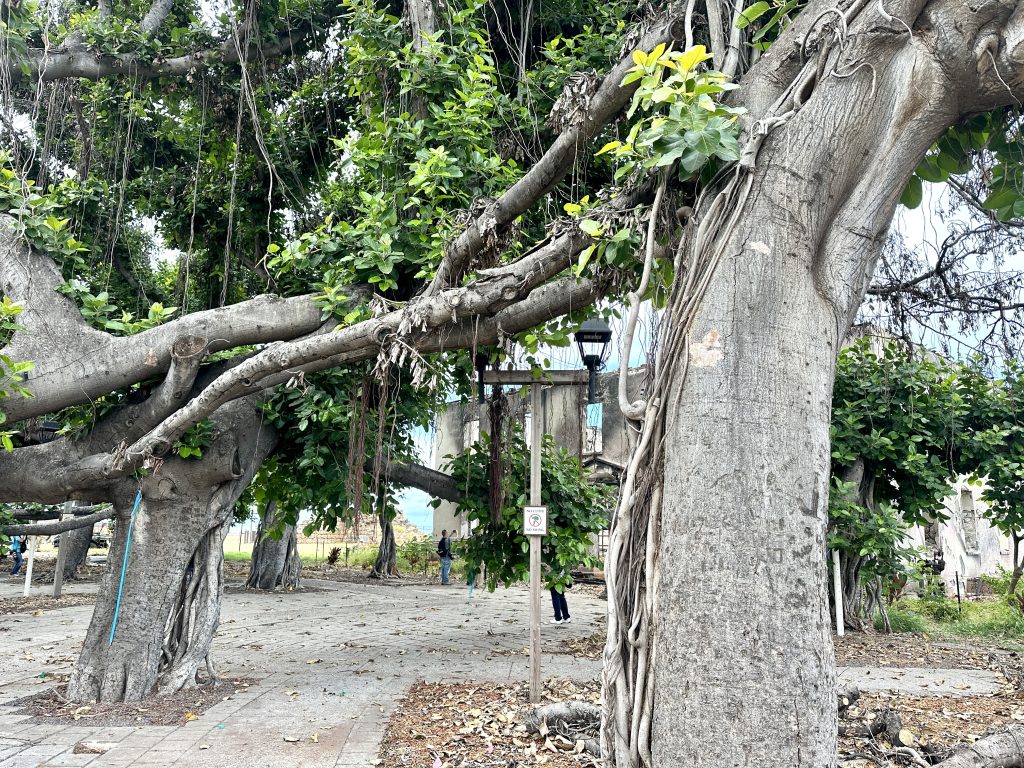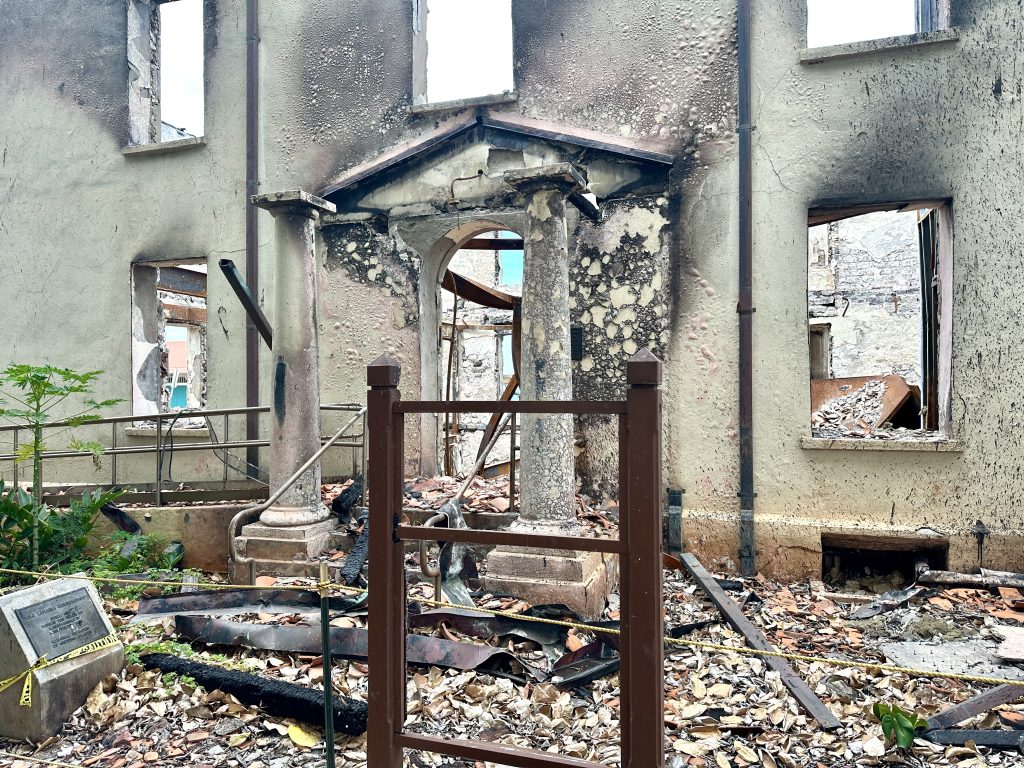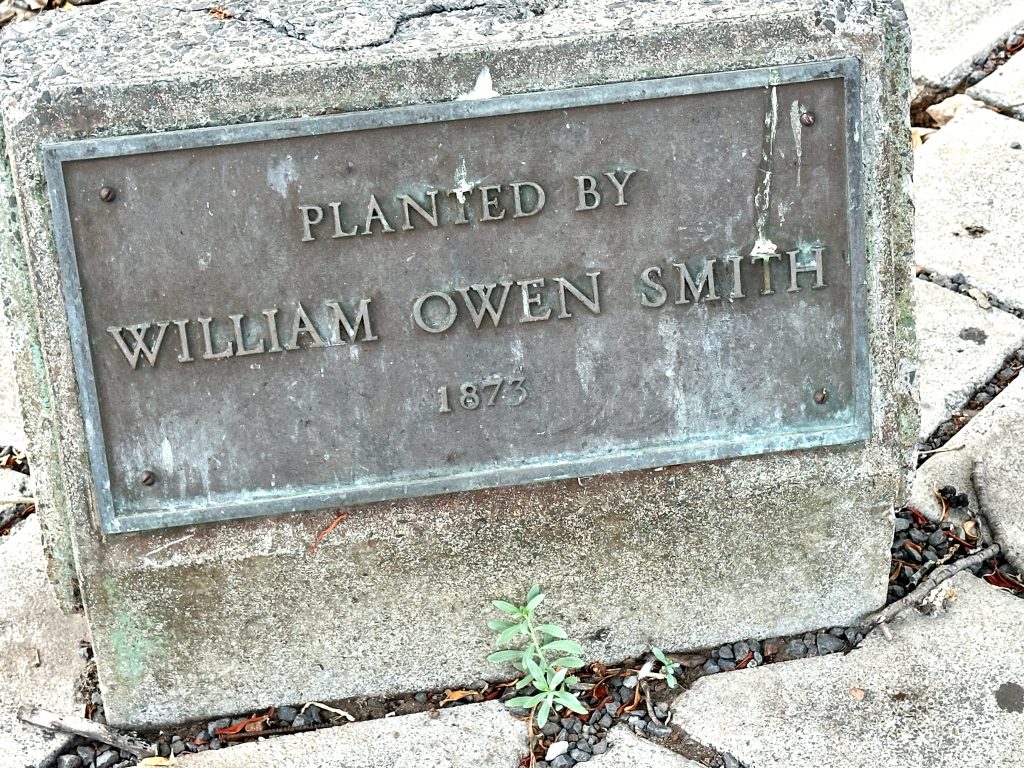How the wildfire flashed over the iconic Lahaina Banyan Tree, leaving it battered but not beaten

Like a flame-thrower fueled by hurricane-force winds, the Lahaina wildfire raced mauka to makai, reducing whatever stood in its path to smoke, ash, concrete blocks and twisted metal. Then it reached the town’s iconic Banyan Tree.
Despite devastation around it, the 60-foot-high tree survived, enduring into its 151st year this past April. Its leaves browned and curled in the immediate aftermath of the fire. Yet today the tree stubbornly sends out its lush green leaves in silence, a reminder that the eerily quiet ghost town remains off-limits to the general public almost a year after the disaster.
The tree’s resilience can be explained, to some degree, by happenstance.
Speaking with reporters last week during a media tour of the Lahaina burn zone, Maui County Arborist Tim Griffith pointed to the north corner of the Lahaina Banyan Court Park. Forty percent of the tree has been removed, the expanse of tree closest to that point at the intersection of Front and Hotel streets.

That’s also where there were a couple of two-story structures — Pioneer Inn and the Wharf Cinema Center — went up in flames. The fire “burned a lot hotter (there due) to more fuel,” Griffith said. “So this section just really got superheated and had no protection.”
“The rest of the block (mauka of the tree and Front Street) was one-story (buildings), and it had these two giant monkeypod trees between the banyan and the buildings across the street,” he said. “So that section didn’t burn as hot. The fire hit the monkeypods, went up the monkeypods, and kind of just flashed over the top. The monkeypods went up, died almost instantly. The bark started falling off within weeks. So they definitely took the brunt (of the fire) and acted as blockers for the banyan.”
Immediately after the fire, the banyan’s leaves were brown and curled, Griffith said, “but nothing down below was really burned. There’s no char on the trunks.”
The wooden benches underneath the tree — most of them survived, he said. So, did the wooden lamps.
“So, it was more of a flash over the top, as opposed to just the fire coming in at ground level,” he said.
As far as helping the tree recover, it’s going to need a lot of tender, loving care, probably over the next 20 years or so, Griffith said.
“The new growth, we do have to train it, prune it to create a canopy,” he said.
Cuttings from the tree are being cared for in various places, and they will be used to plant and try to return the tree to places where burned parts have been removed. Hopefully, newly planted parts of the tree will grow toward the parent tree and fuse together in the future, Griffith said.
The goal is to “re-establish the footprint that we had before,” he said. So, there’s a “minimum 20-year plan of just pruning every year, every couple of years, depending on how fast the trees are growing.”
Progress will depend on the health of the tree, and, if it’s not growing as fast as hoped, then there won’t be as much pruning.
The tree is outfitted with sensors to detect water flow into the tree.
In April, the Lahaina Banyan Tree reached 151 years old, after being planted on April 24, 1873, by Lahaina town sheriff William Owen Smith to mark the 50th anniversary of the first Protestant mission in Lahaina.
The tree has been the largest banyan in the United States. It’s also listed as an exceptional tree in the state of Hawaiʻi.





















